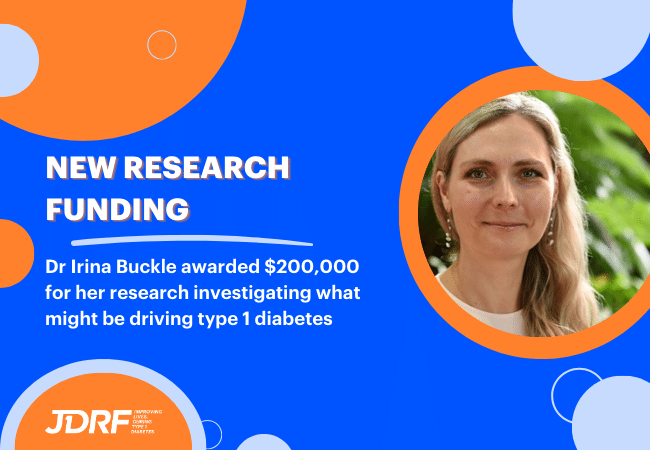Talking T1D Research with Prof Tom Kay
Prof Tom Kay is Director of St Vincent’s Institute of Medical Research in Melbourne, and Principal Investigator of the recently launched BANDIT clinical trial. BANDIT is looking at a drug called baricitinib, currently used in rheumatoid arthritis, that has the potential to slow or stop the destruction of beta cells in people with newly diagnosed T1D.
Ahead of World Diabetes Day, Prof Kay was also awarded the 2020 Australian Diabetes Society Kellion Award for his outstanding contribution in diabetes research. This award recognises Prof Kay’s many decades of work to understand type 1 diabetes and develop new treatment options for people with the disease, including baricitinib.
We caught up with Prof Kay to hear a bit more about the BANDIT trial and some of the JDRF-supported work leading up to this point.
What’s really exciting about the BANDIT trial for people with T1D?
Type 1 diabetes is an immune disease, but we still treat it by replacing insulin, not by addressing the underlying mechanisms. Insulin is essentially a bandaid treatment for the disease. Momentum has been building to transform our approach to type 1 diabetes treatment.
The BANDIT trial represents an opportunity to test a new treatment that may help people retain their insulin-producing capacity for longer, by protecting the cells from the immune system attack. If the trial is successful the body will make more of its own insulin that will make type 1 diabetes easier to manage.
How did your team first discover that baricitinib could be used to treat T1D?
We have been working on understanding the pathways that control the immune response in type 1 diabetes for over three decades. That work has given us a lot of insight into what is happening in the immune system of people who develop the disease and has involved great support from JDRF over that time.
We found that blocking one of these pathways could be useful for treating T1D, but our ways of doing this in the lab could not be used clinically in people. We had to wait for industry to develop drugs that target this same pathway, known as JAK inhibitors.
The drugs work virtually identically to the methods we used before, but give us the opportunity to test our findings in people with diabetes for the first time.
What outcomes are you hoping to see in this clinical trial?
We used JAK inhibitors in the laboratory to show that they would prevent immune cells from destroying insulin-producing beta cells. We found that the drugs do this partly by blocking effects of the immune system on the beta cell and partly by acting on the immune cells themselves. The fact that both are affected makes the treatment especially effective in our studies.
The drug we are testing has already been approved for the treatment of rheumatoid arthritis, so we know that it is safe and that it is effective in that disease setting. Our experimental results indicate that it modifies the course of type 1 diabetes in the lab. We are hopeful that we will see the same effect in the trial participants.
What are the next steps for baricitinib after this trial?
We are hopeful that the results of the trial will be positive and that baricitinib or other related drugs will become available for people newly diagnosed with T1D. We will need to satisfy regulatory authorities that use of the drug is justified, which is always appropriately challenging. We then will look at trials in people at different stages of the disease to test the disease-modifying effect. We imagine that the ultimate treatment for type 1 diabetes might involve combining a number of different strategies and we will continue working on these in the meantime.




